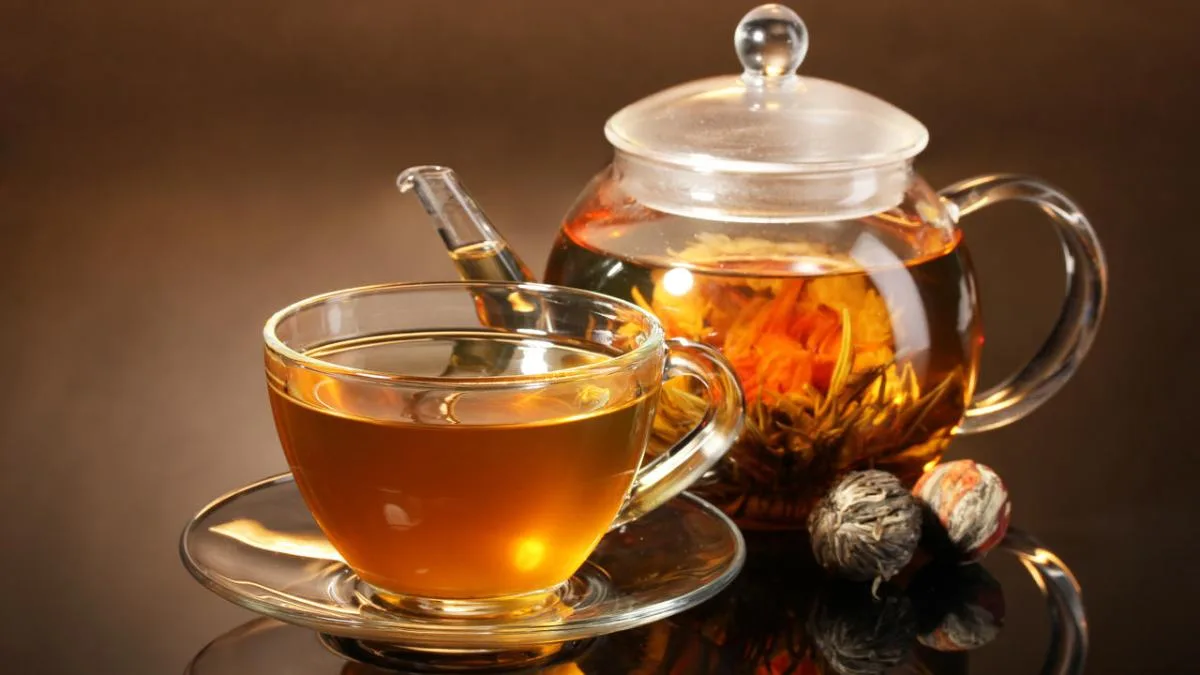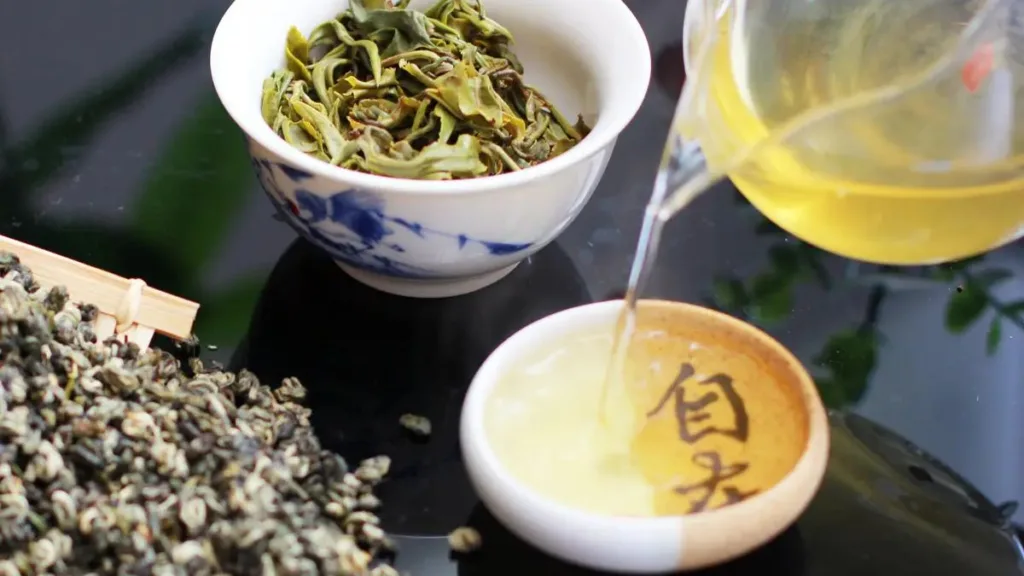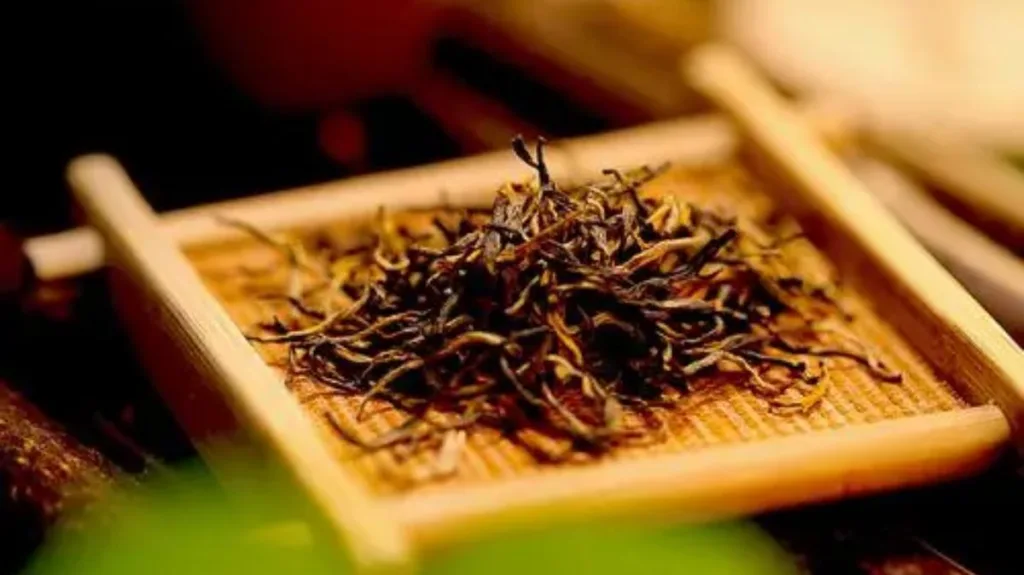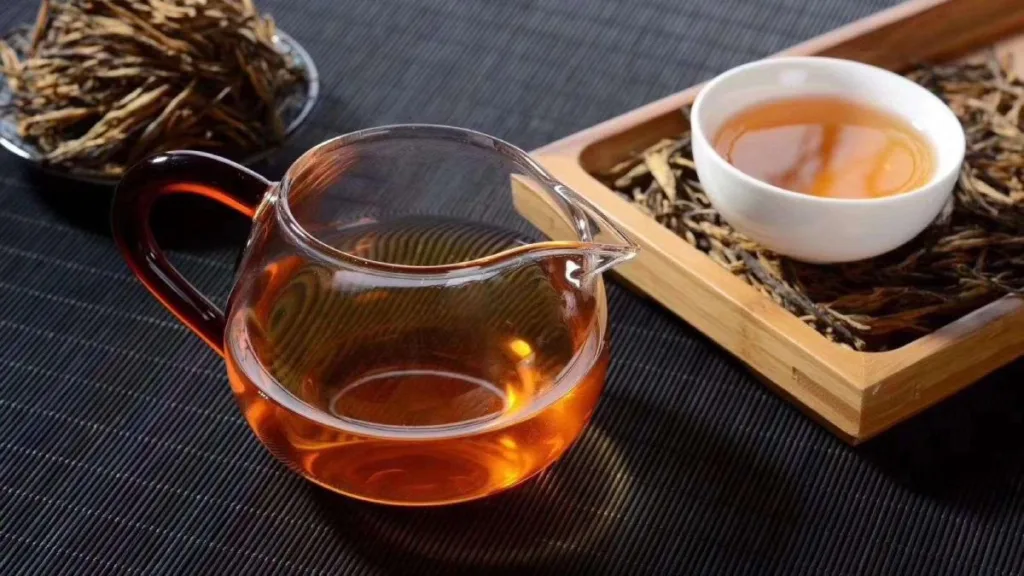Why is Chinese green tea sometimes brown? This question often perplexes newcomers to the world of Chinese green tea. Whether it’s the dry tea leaves or the brewed tea itself, they often exhibit shades of brown. Is the tea spoiled or past its prime? In this explanation, we’ll delve into this phenomenon.
Chinese green tea is typically unfermented in its processing, preserving a high content of chlorophyll (the green pigment in plants). However, chlorophyll is relatively unstable and prone to oxidation and breakdown when exposed to air. Consequently, over time, the color of green tea can change, and the tea liquor may turn yellow. Contrary to the vibrant green color observed during brewing, the actual tea liquor of most green teas is a shade of yellow-green. Pure green or deep green-colored teas are rare, as the color is influenced by the nature of chlorophyll itself. During tea processing, chlorophyll can also break down, but most green teas undergo a step known as “kill-green” with high-temperature treatment. This deactivates enzymes and preserves the green color while preventing spoilage over time.
Why Does the Tea Liquor Sometimes Turn Yellow?
The green color observed when brewing green tea is due to its high chlorophyll content. As mentioned, green tea is unfermented, so it retains a significant amount of chlorophyll. However, chlorophyll is highly reactive and susceptible to oxidation and breakdown when exposed to air. This can cause the tea’s color to shift from green to yellow over time. The breakdown of chlorophyll is a gradual process, and the green tea liquor is often yellow-green rather than pure green. To minimize this, many green teas are processed using high-temperature “kill-green” techniques to deactivate enzymes and prevent rapid chlorophyll breakdown.
The rate of chlorophyll breakdown has a threshold. When the temperature exceeds 80 degrees Celsius (176 degrees Fahrenheit), its breakdown accelerates significantly. This is why popular advice suggests brewing green tea with water below 85 degrees Celsius (185 degrees Fahrenheit). This temperature range helps preserve the green color while allowing the tea’s flavor to infuse.
Why Does Freshly Brewed Green Tea Turn Brown Over Time?
When freshly brewed, green tea exhibits a bright green color, but over time, it may slowly turn yellow and eventually brown. This color change is not due to oxidation but rather the decomposition of chlorophyll. Chlorophyll is highly unstable, and heat can accelerate its breakdown. Exposure to light and temperatures exceeding 80 degrees Celsius can also expedite this process. As chlorophyll breaks down, the color of tea becomes dull, and the color of thearubigins (compounds responsible for the brown color in tea) becomes more prominent.
In most cases, the gradual shift from green to brown in green tea is not a cause for concern. It does not necessarily indicate that the tea is spoiled or unsafe to consume. The change in color is primarily a visual alteration, and the tea’s flavor is less affected by this transformation.
However, it’s crucial to differentiate between harmless changes in color and signs of tea spoilage. If green tea exhibits off-putting odors, flavors, or unusual appearances (e.g., mold or discoloration beyond brown), it might be an indication of deterioration or contamination. In such cases, it’s best to avoid consuming the tea to prevent potential health risks.
In conclusion, the transition of Chinese green tea from vibrant green to brownish hues is primarily a result of chlorophyll breakdown, which is influenced by factors such as temperature, air exposure, and light. As long as the tea maintains its pleasant aroma and flavor, changes in color are typically harmless. Nevertheless, it’s essential to be discerning and monitor the tea for any signs of spoilage or contamination to ensure your tea-drinking experience remains safe and enjoyable.




